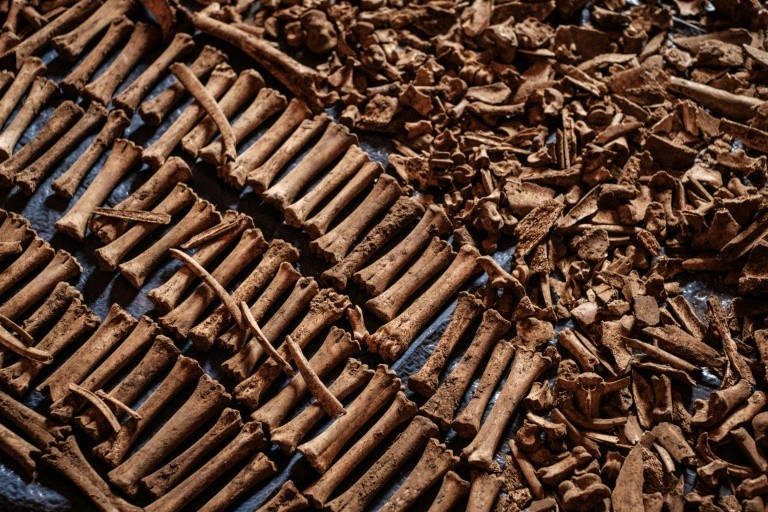An agricultural scientist who became an architect of Rwanda’s 1994 genocide, Augustin Bizimana cheated justice to the end, lying buried in a corner of Congo as investigators strove for decades to bring him to book.
DNA tests from remains in a grave in Pointe Noire in Republic of Congo found Bizimana died 20 years ago, the UN said on Friday.
Bizimana was born in 1954 in Gituza in northern Rwanda.
Much of his life is shrouded in mystery, from his origins to his personal life, but in university he became known as a Hutu radical as he pursued a degree as an agronomist in a country torn by ethnic tensions.
He ran a development project producing pyrethrum — a natural insecticide derived from the chrysanthemum flower — before entering politics as state representative for his home region of Byumba in 1992.
Read Also: France Arrests Fugitive ‘Financier’ Of Rwanda Genocide
“He was someone who liked to assert himself, to position himself as leader. In university he showed himself, somewhat zealously, to be a member of the (ruling and sole political party) MRND. He was absolutely a supporter of the hard line,” a former university colleague now exiled in Europe told AFP.
Bizimana took up the post of defence minister in an interim government in 1993 at the tail end of a civil war between the Hutu-led government and Tutsi-led rebel group the Rwandan Patriotic Front (RPF).
The fragile peace crumbled after a plane carrying President Juvenal Habyarimana, from the Hutu majority, was shot down in Kigali on April 6, 1994, unleashing a killing spree that would leave 800,000 mostly Tutsis dead in 100 days.
Bizimana was on official business in Cameroon the day the killings started, but returned three days later.
He was defence minister while the extermination of the Tutsis was planned, and under his watch the Rwandan Armed Forces (FAR), Hutu militia and civilians carried out the bloodshed, investigators found.
The prosecutor’s indictment at the International Criminal Tribunal for Rwanda hints at a man wholly at ease with the slaughter around him.
The indictment notes that as Bizimana drove around the country as minister of defence, he regularly passed roadblocks manned by soldiers and strewn with corpses.
“On those occasions, he never raised the slightest objection to what he saw,” the indictment read.
It continues by describing an occasion when Bizimana did nothing to stop a member of his escort from executing two Tutsis right in front of him — and another where he did not intervene after being directly informed that soldiers were abducting and raping Tutsi students from a nursing school.
Not only did he do nothing to stop the slaughter, he also tried to hide it, giving a radio interview in mid-May where he “falsely asserted that the massacres had stopped.”
He was also on multiple occasions present in key locations where massacres were carried out.
– On the run –
Hunted by the RPF rebels who eventually put a halt to the fighting and seized power, Bizimana and other members of the government moved first to central Gitarama and then Gisenyi, before fleeing the country in July 1994.
Bizimana is believed to have spent years in the Democratic Republic of Congo before landing up in Congo-Brazzaville, as the neighbouring Republic of Congo is known.
In the meantime, he was indicted by the United Nations’ International Criminal Tribunal for Rwanda (ICTR) in 1998.
The 13 counts included genocide, murder, rape and torture, including the murder of former prime minister Agathe Uwilingiyimana and 10 Belgian UN peacekeepers who had been deployed to protect her.
In 2000 it was already rumoured among Rwandan refugees that he had died of natural causes in Congo.
However the hunt for Bizimana continued.
The United States government offered a reward of $5 million (4.59 million euros) for tips leading to his arrest.
In 2013, a judge issued an arrest warrant and a request for all UN member states to search for, arrest and transfer Bizimana to the custody of the international court.
On Friday the UN tribunal said it had tested human remains from the Congolese grave site.
Extensive analysis showed that Bizimana had died in 2000 after all, in around August of that year.
The news dashed the hopes of victims for justice, just days after the arrest in Paris of Felicien Kabuga, one of the last fugitives from the genocide, who had been on the run for three decades.
AFP

